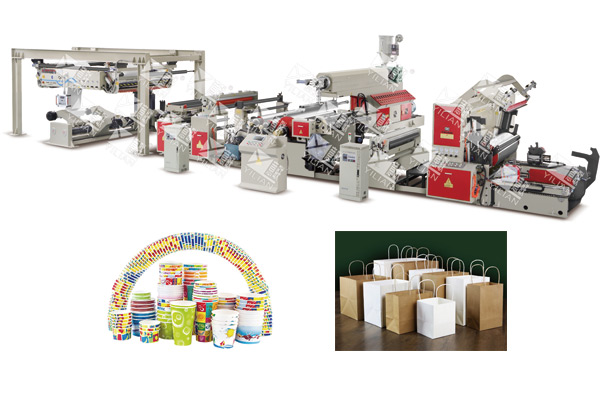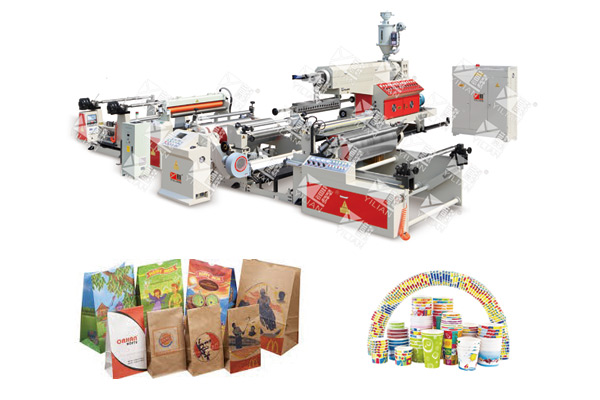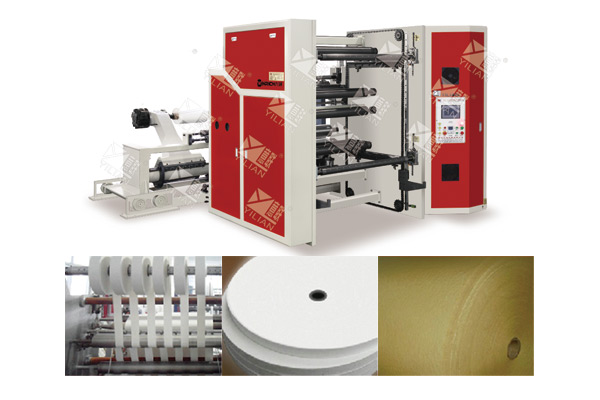Raw Materials for Extrusion Process in Coating and Lamination Machines
Datetime: 7/12/2025 11:37:00 AM Visit: 1252
The extrusion process is a fundamental technique in manufacturing, particularly in industries that require coating, lamination, and film production. Extrusion coating lamination machines are widely used in packaging, textiles, and industrial applications to create multi-layered materials with enhanced properties.
Understanding the raw materials used in extrusion is crucial for optimizing product performance, durability, and cost-efficiency. This article explores the key raw materials used in extrusion processes, with a focus on extrusion coating and lamination applications.
1. Polymers (Plastics) – The Primary Extrusion Material
Polymers are the most common raw materials in extrusion processes. Depending on the application, different types of plastics are selected based on their melting point, flexibility, and adhesion properties.
Common Polymers Used in Extrusion Coating & Lamination:
Low-Density Polyethylene (LDPE) – Offers excellent flexibility and moisture resistance, commonly used in food packaging.
Linear Low-Density Polyethylene (LLDPE) – Provides better tensile strength and puncture resistance than LDPE.
High-Density Polyethylene (HDPE) – Used for rigid packaging due to its high strength and chemical resistance.
Polypropylene (PP) – Known for its heat resistance, making it ideal for hot-fill packaging.
Ethylene Vinyl Acetate (EVA) – Enhances adhesion in multilayer laminates, often used in solar panel encapsulation.
Polyethylene Terephthalate (PET) – Used for high-barrier packaging due to its strength and clarity.
Polyamide (Nylon) – Provides excellent oxygen barrier properties, often used in medical and food packaging.
2. Additives & Modifiers
To enhance the performance of extruded films and coatings, various additives are blended with base polymers.
Key Additives in Extrusion Coating & Lamination:
Antioxidants – Prevent polymer degradation during high-temperature extrusion.
Slip & Anti-block Agents – Reduce friction between film layers (e.g., silica-based additives).
UV Stabilizers – Protect laminated films from sunlight degradation.
Pigments & Colorants – Used for branding and product identification (e.g., TiO₂ for white films).
Adhesion Promoters – Improve bonding between different layers (e.g., maleic anhydride grafted polymers).
3. Substrates for Lamination
Extrusion coating and lamination involve bonding a molten polymer layer onto a substrate. The choice of substrate depends on the end-use application.
Common Substrates in Extrusion Lamination:
Paper & Paperboard – Used in food packaging (e.g., milk cartons, disposable cups).
Aluminum Foil – Provides an excellent moisture and oxygen barrier (e.g., pharmaceutical blister packs).
Plastic Films (BOPP, BOPET, CPP) – Used in flexible packaging for snacks and beverages.
Nonwoven Fabrics – Used in medical and hygiene products (e.g., surgical gowns, diapers).
Textiles – Extrusion-coated fabrics are used in automotive and industrial applications.
4. Adhesives & Tie Layers
In multi-layer extrusion lamination, tie layers or adhesives are used to bond dissimilar materials.
Common Adhesive Materials:
Polyurethane (PU) Adhesives – Provide strong bonding in flexible packaging.
Acrylic-based Adhesives – Used for heat-resistant laminates.
Extrudable Tie Layers (e.g., Primacor, Bynel) – Enhance adhesion between polymers and metals/foils.
Conclusion
The selection of raw materials for extrusion coating and lamination significantly impacts the final product's performance. Polymers, additives, substrates, and adhesives must be carefully chosen based on mechanical, thermal, and barrier requirements.
Extrusion coating lamination machines enable manufacturers to produce high-performance materials for packaging, medical, and industrial applications. By understanding the role of each raw material, businesses can optimize their extrusion processes for better efficiency and product quality.
Would you like more details on a specific extrusion application? Let us know in the comments!










